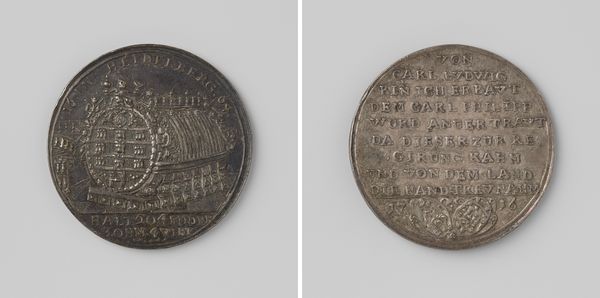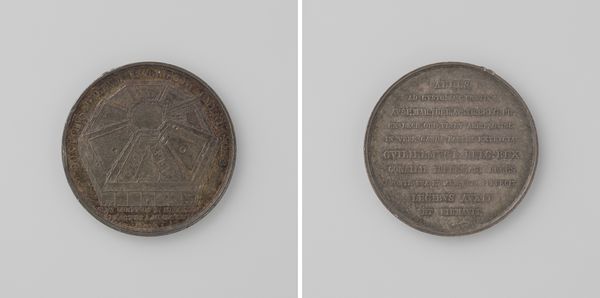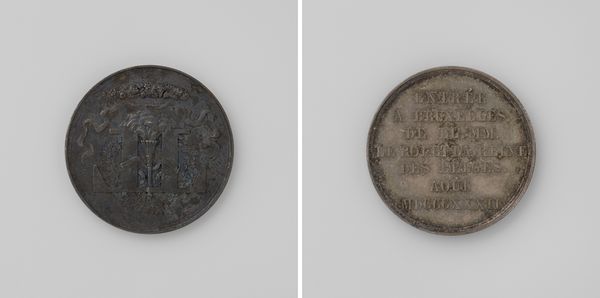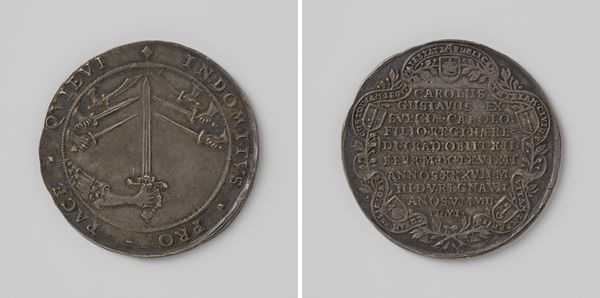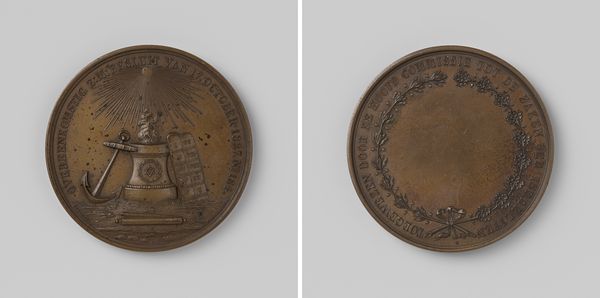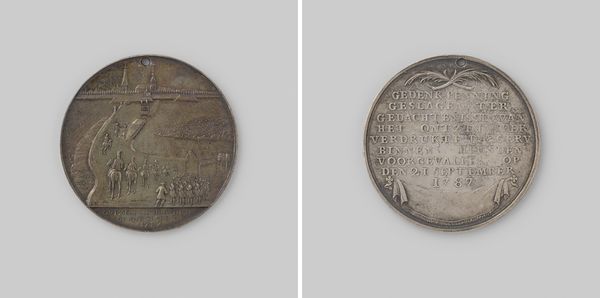
Eerste eeuwfeest van het diakoniehuis van de Nederduitsch Hervormde Gemeente te Leeuwarden 1858
0:00
0:00
mixed-media, carving, print, metal, relief
#
mixed-media
#
carving
#
dutch-golden-age
# print
#
metal
#
relief
#
stoneware
#
ceramic
#
decorative-art
Dimensions: diameter 3.8 cm, weight 18.69 gr
Copyright: Rijks Museum: Open Domain
Editor: Here we have "Eerste eeuwfeest van het diakoniehuis van de Nederduitsch Hervormde Gemeente te Leeuwarden", made in 1858 by J.T. Born using mixed media and carving in relief on metal. It’s a print on, perhaps stoneware or ceramic? The relief reminds me a bit of decorative Dutch Golden Age art. It looks worn with age. What historical context can you offer? Curator: This piece, commemorating the centennial of a deaconry house, speaks volumes about 19th-century Dutch social structures. Notice how the very existence of such an object underscores the role of the church, specifically the Nederduitsch Hervormde Gemeente, in providing social welfare. To whom was this relief likely distributed and what might the symbolism on it communicate? Editor: I imagine it was given to patrons of the church. I can make out "Leeuwarden" which I believe is a city. The inscription details the institution and celebration. Do you think the object's artistic style would relate to what would have been found within the Diakoniehuis at the time? Curator: Absolutely. Objects like these reinforced the legitimacy and historical grounding of institutions. Commemorative art frequently drew inspiration from the aesthetics associated with societal strength and pride in institutions, emulating what citizens would want their public works and community to express. Think of the choices around its creation; why a relief, and why this particular style reminiscent of the Golden Age, even a couple of centuries later? Editor: That makes sense. The choice to revisit the Golden Age could definitely communicate a sense of established stability, almost an unbroken chain of charity. Curator: Precisely! Consider also the potential role of such objects in shaping public memory and solidifying the church's influence. The piece reveals an intentional public identity through art. Editor: It’s fascinating how a simple commemorative relief reveals so much about societal values and power structures. Now I see how much a work of art acts as a public relations tool. Curator: Indeed. It prompts us to think critically about the roles art plays in shaping societal narratives.
Comments
No comments
Be the first to comment and join the conversation on the ultimate creative platform.
